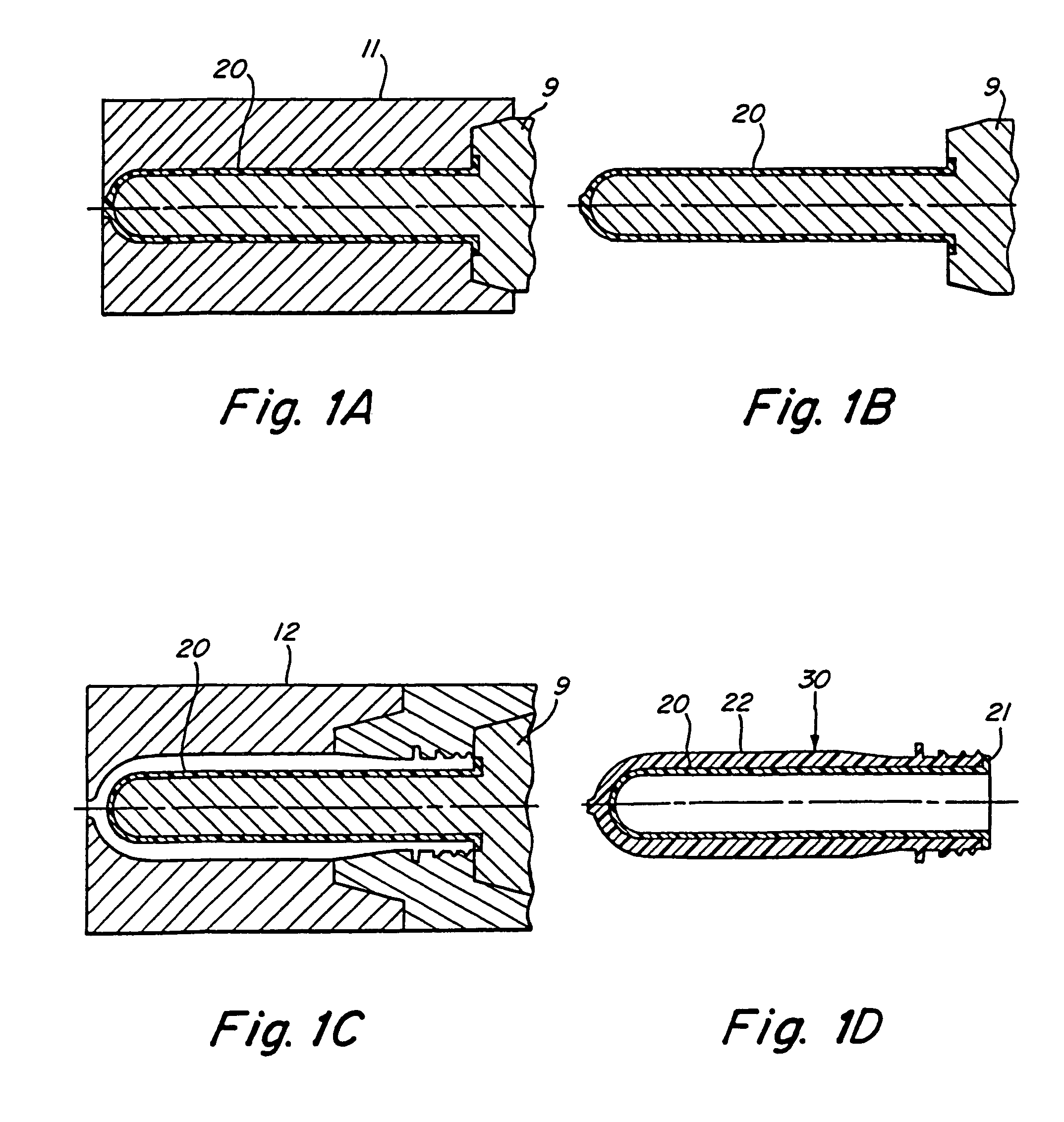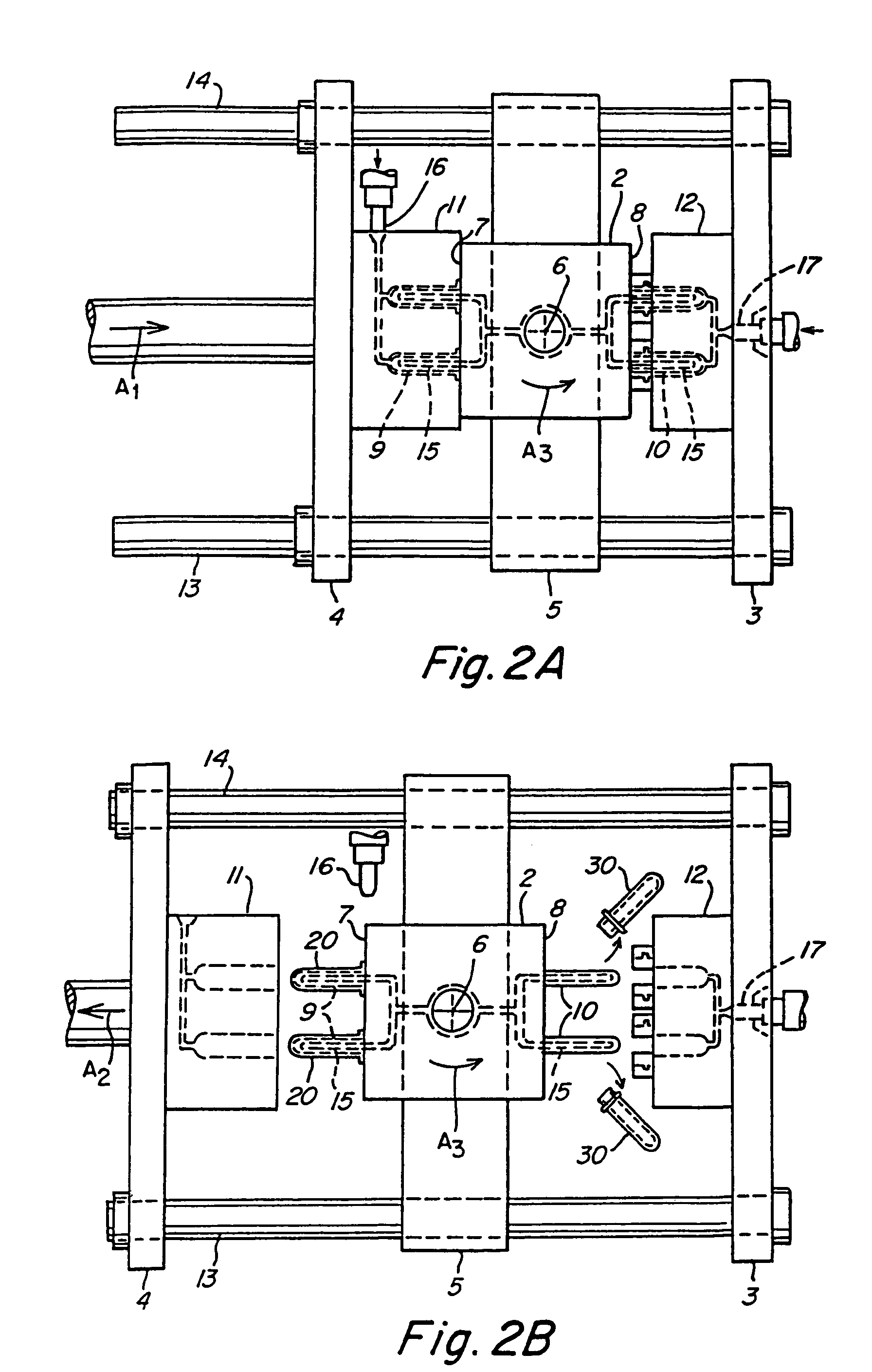Sleeve molding
a technology of injection molding and sleeves, applied in the field of sleeves, can solve the problems of difficult to achieve close dimensional tolerances, difficult to achieve commercial use of pen, and substantially more expensive pen than p
- Summary
- Abstract
- Description
- Claims
- Application Information
AI Technical Summary
Benefits of technology
Problems solved by technology
Method used
Image
Examples
Embodiment Construction
First Preform Embodiment (Refillable Water)
[0036]FIGS. 1A-1D illustrate schematically one method embodiment for making a preform with a full-length body sleeve and a single outer layer; this preform is particularly useful for making a returnable and refillable water bottle. FIG. 1A shows a first core 9 positioned in a first mold cavity 11, and forming a chamber therebetween in which there is formed an injection-molded inner sleeve 20. The sleeve 20 is partially cooled and then the core 9 carrying sleeve 20 is removed from the first mold cavity as shown in FIG. 1B. While still warm, the sleeve 20 on core 9 is inserted into a second mold cavity 12 which forms an interior molding chamber for forming an outer layer 22 over the inner sleeve 20. After the second molding step, a preform 30 has been formed including outer layer 22 and inner sleeve 20 as shown in FIG. 1D. The inner sleeve includes a top flange 21 which will form the top sealing surface of the resulting container (see FIG. 4)...
PUM
| Property | Measurement | Unit |
|---|---|---|
| Temperature | aaaaa | aaaaa |
| Temperature | aaaaa | aaaaa |
| Temperature | aaaaa | aaaaa |
Abstract
Description
Claims
Application Information
 Login to View More
Login to View More - R&D
- Intellectual Property
- Life Sciences
- Materials
- Tech Scout
- Unparalleled Data Quality
- Higher Quality Content
- 60% Fewer Hallucinations
Browse by: Latest US Patents, China's latest patents, Technical Efficacy Thesaurus, Application Domain, Technology Topic, Popular Technical Reports.
© 2025 PatSnap. All rights reserved.Legal|Privacy policy|Modern Slavery Act Transparency Statement|Sitemap|About US| Contact US: help@patsnap.com



